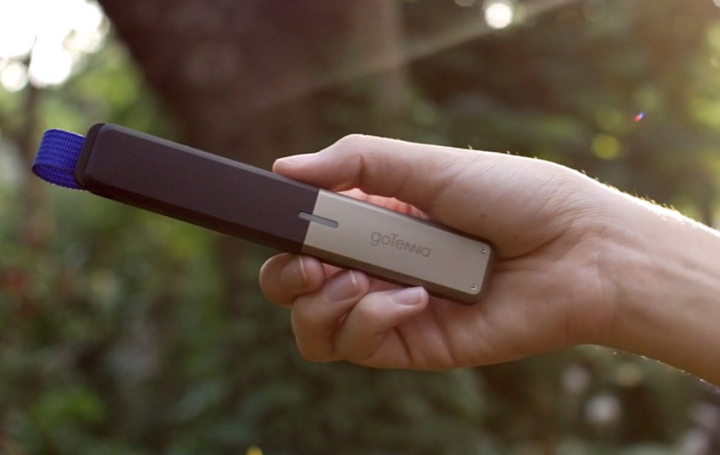
Now that most of us have become accustomed to ubiquitous cellphone networks, losing service is a terribly frustrating experience. Being stuck in an area without service definitely isn’t the worst thing in the world, but depending on the situation, it can be anything from a minor inconvenience to weekend-ruining experience as your plans fall apart.
But not to worry; thanks to a nifty innovation from the folks at goTenna, you might never have to suffer through dead zones and spotty service ever again. The company has developed a clever technological workaround that allows you to send messages without a connection to your cell phone provider’s network. It doesn’t use cell towers or Wi-Fi at all, so it’ll work even if all other forms of communication are unavailable.

Their product, which bears the same name as the company itself, is basically a low-power radio transceiver that makes your phone function like a CB radio. To use it, you start by pairing your smartphone to goTenna wirelessly, using Bluetooth-LE. One you’re connected, you simply fire up the accompanying smartphone app and type out a text message like you would in any other situation. When you hit send, your smartphone will beam the message to goTenna, which will then shoot it out via long-range radio waves (151-154 MHz) to the intended recipient (who must also have a goTenna). At the other end, the exact same thing happens, but in reverse: the recipient goTenna sends your message over Bluetooth-LE to the smartphone app it’s paired with. It’s basically like turning your phone into a long-range walkie talkie.
In optimal conditions, the device is reportedly able to send messages to other goTennas up to 50 miles away — but that number can vary greatly depending on the elevation and environment you happen to be in.
Daniela Perdomo, CEO of the company, says the idea for the device came during Hurricane Sandy, when downed cell towers hampered communication. But she says goTenna has applications well beyond disasters and emergencies, such as traveling abroad or trying to text friends during musical festivals. It’d also be ideal for backpacking and hiking trips, as it would allow trekkers to communicate with each other despite being nowhere near a cellphone tower.
Currently, the GoTenna is being offered for pre-order at a cost of $150 per pair, but once enough units are sold to fund the initial production run, the price will double. So, if you dig the idea of communicating on an alternative, low-bandwidth network, we highly recommend jumping on that fast.



